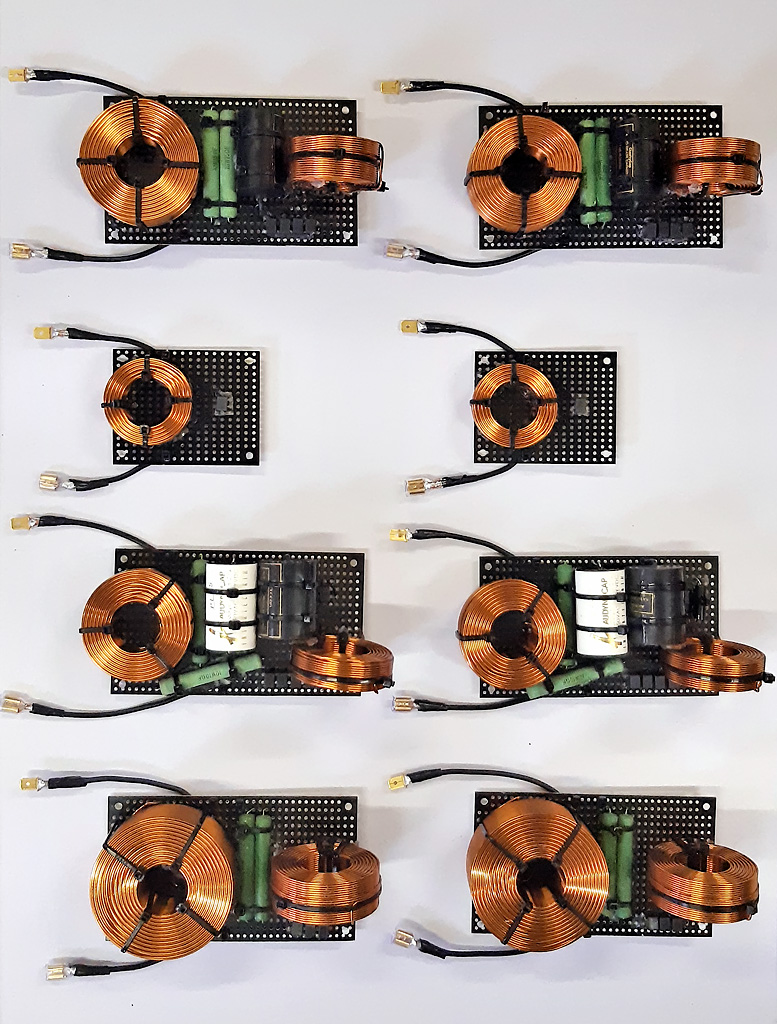Hi.
Interested in tapering an array of 10-12 small (3”) full-range drivers, for improved response towards the center of the array, which will be at ear level.
I searched the forums snd read Jim Griffin’s “,white paper”, and am leaning towards either a 3,2,2,3. Or 2,3,3,4 type connection of drivers.
The key here is that i wish to place a small treble unit at the center of the array.
Anyone have experience here and/or can give advice on techniques/resources?
Thanks
Interested in tapering an array of 10-12 small (3”) full-range drivers, for improved response towards the center of the array, which will be at ear level.
I searched the forums snd read Jim Griffin’s “,white paper”, and am leaning towards either a 3,2,2,3. Or 2,3,3,4 type connection of drivers.
The key here is that i wish to place a small treble unit at the center of the array.
Anyone have experience here and/or can give advice on techniques/resources?
Thanks
Better overall to put the tweeter beside the array and position the arrays with the tweeter on the outside and toe'd in to 'taste' for acoustic time alignment.
Don't recall ever reading his WP, but wiring whichever way yields the highest efficiency and pad down if necessary should always be the best choice for modern [high DF] electronics.
Don't recall ever reading his WP, but wiring whichever way yields the highest efficiency and pad down if necessary should always be the best choice for modern [high DF] electronics.
Tapering the little drivers like that is going to eat up a lot of headroom. I decided to use frequency dependent shading, but that does require equalizing the frequency curve to get what you need.
I started with full range (floor to ceiling) arrays, connected in series parallel. Out of curiosity I started simming filter options in Vituixcad, due to the pré work done by nc535 and eventually building these filters. This way all of the drivers still help out at the bottom end.
Here's a random point into the discussion/simulations showing the filters and how that works out: https://www.diyaudio.com/forums/full-range/337956-range-line-array-wall-corner-placement-63.html#post6222495
(this was the 6th try, I ended up with version 19 (and many a,b,c versions in between 😀).
The filters in final revision:

(before I decided to add 4 more notch filters (lol))
I started with full range (floor to ceiling) arrays, connected in series parallel. Out of curiosity I started simming filter options in Vituixcad, due to the pré work done by nc535 and eventually building these filters. This way all of the drivers still help out at the bottom end.
Here's a random point into the discussion/simulations showing the filters and how that works out: https://www.diyaudio.com/forums/full-range/337956-range-line-array-wall-corner-placement-63.html#post6222495
(this was the 6th try, I ended up with version 19 (and many a,b,c versions in between 😀).
The filters in final revision:
(before I decided to add 4 more notch filters (lol))
Last edited:
As a minor addition from the peanut gallery, I'd also point out that adding a single central tweeter creates a disparity in both the polars and attenuation by distance. While it can work (Jim Griffin did it himself with his TB based Needle array) you tend to get into a situation where optimal performance only exists at a set distance, rather than the basically consistent behaviour of a line source. Power-tapering can work reasonably for short arrays, but as has been noted, you're giving up power-handling in the process, so potentially better to extend it with an even power distribution and / or sit a bit closer. 😉